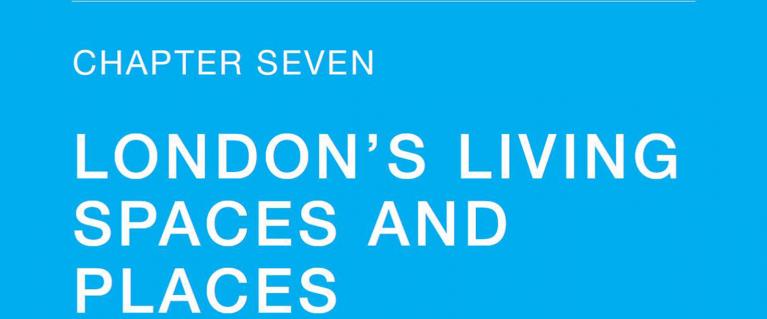
Policy 7.4 Local character
Policy
Strategic
A Development should have regard to the form, function, and structure of an area, place or street and the scale, mass and orientation of surrounding buildings. It should improve an area’s visual or physical connection with natural features. In areas of poor or ill-defined character, development should build on the positive elements that can contribute to establishing an enhanced character for the future function of the area.
Planning decisions
B Buildings, streets and open spaces should provide a high quality design response that:
a has regard to the pattern and grain of the existing spaces and streets in orientation, scale, proportion and mass
b contributes to a positive relationship between the urban structure and natural landscape features, including the underlying landform and topography of an area
c is human in scale, ensuring buildings create a positive relationship with street level activity and people feel comfortable with their surroundings
d allows existing buildings and structures that make a positive contribution to the character of a place to influence the future character of the area
e is informed by the surrounding historic environment.
LDF preparation
C Boroughs should consider the different characters of their areas to identify landscapes, buildings and places, including on the Blue Ribbon Network, where that character should be sustained, protected and enhanced through managed change. Characterisation studies can help in this process.
Supporting text
7.13 The social, cultural, environmental and economic relationships between people and their communities are reinforced by the physical character of a place. Based on an understanding of the character of a place, new development should help residents and visitors understand where a place has come from, where it is now and where it is going. It should reflect the function of the place both locally and as part of a complex urban city region, and the physical, economic, environmental and social forces that have shaped it over time and are likely to influence it in the future. Local character does not necessarily recognise borough boundaries. The Mayor therefore encourages cross-borough working to ensure a consistent approach to understanding and enhancing a sense of character. The Mayor has developed supplementary guidance to help Boroughs with this work.
7.14 The physical character of a place can help reinforce a sense of meaning and civility – through the layout of buildings and streets, the natural and man-made landscape, the density of development and the mix of land uses. In some cases, the character is well preserved and clear. In others, it is undefined or compromised by unsympathetic development. Through characterisation studies, existing character can be identified and valued, and used to inform a strategy for improving the place. This should help ensure the place evolves to meet the economic and social needs of the community and enhances its relationship with the natural and built landscape. The community should be involved in setting these goals for the future of the area (Policy 7.1).
7.15 The Blue Ribbon Network has significant cultural, historic, economic and environmental value to local character. Later in this chapter a range of policies require buildings and spaces to have particular regard to their relationship to waterspaces in their form, scale and orientation. New development should enhance physical and visual access between existing streets and waterfront sites and, incorporate features that make the best functional use of the site’s proximity to a water resource. Buildings and spaces should be designed to activate the Blue Ribbon Network in a way that is appropriate to its character, infrastructure value and heritage significance.
Need a document on this page in an accessible format?
If you use assistive technology (such as a screen reader) and need a version of a PDF or other document on this page in a more accessible format, please get in touch via our online form and tell us which format you need.
It will also help us if you tell us which assistive technology you use. We’ll consider your request and get back to you in 5 working days.